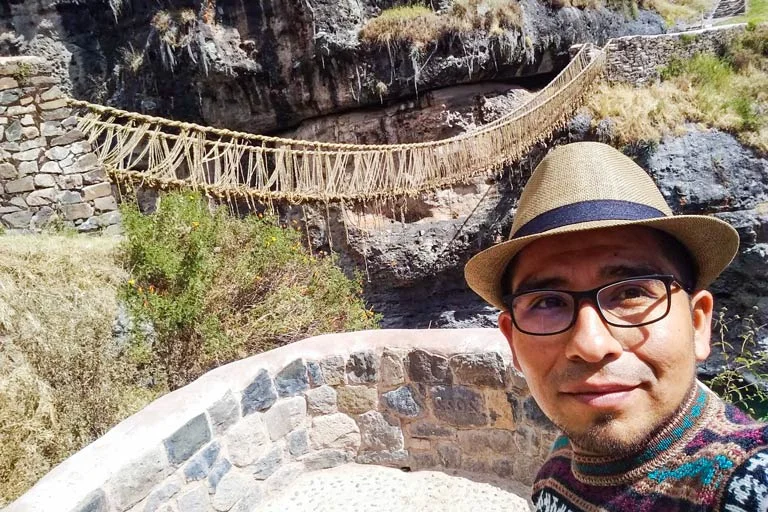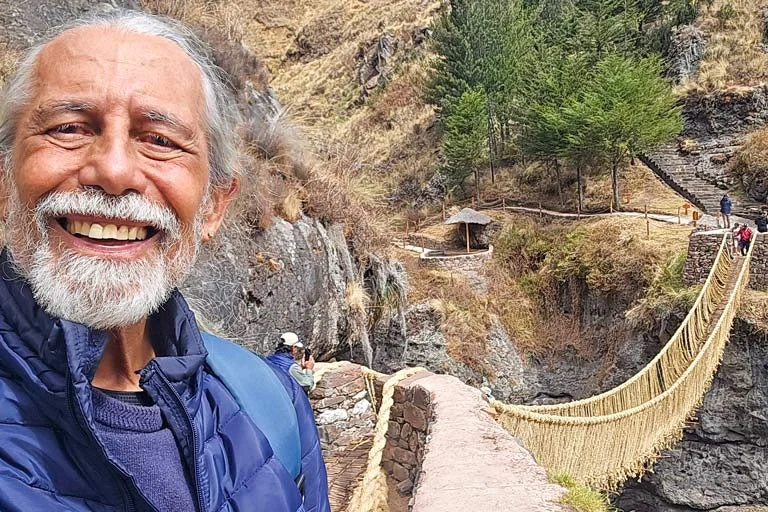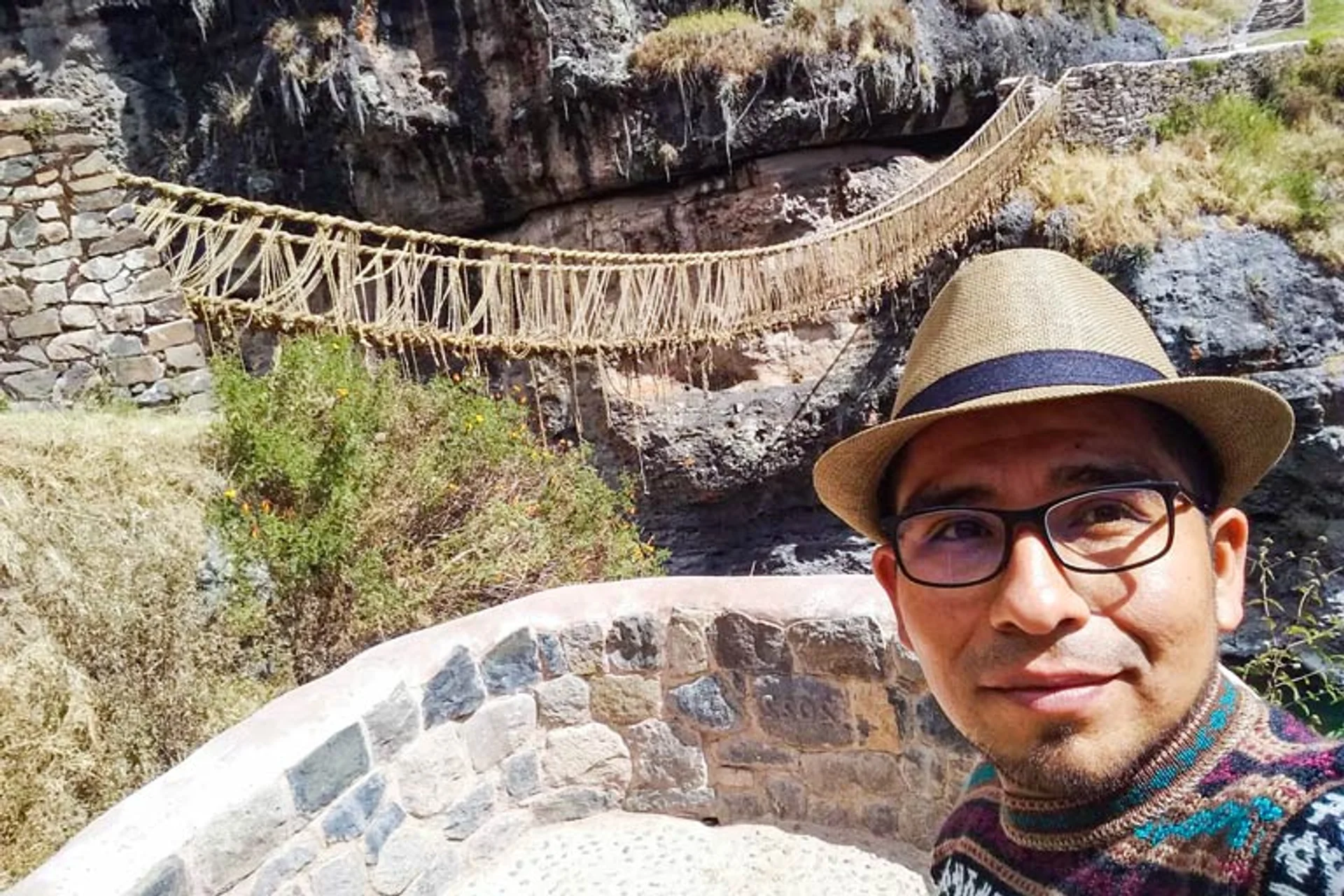How to get to the Q’eswachaka Inca Bridge? Transportation options
Getting to the Q’eswachaka Inca Bridge isn’t complicated, but it’s not something you should take lightly either. If you’re thinking about visiting, it’s key to know your transportation options. Can you get there by car? Is it worth booking a tour? Are there public buses? In this guide, we’ll tell you everything you need to know to choose the best route to one of the last remaining Inca suspension bridges still in use.

Content
- How to get to the Q’eswachaka Bridge from Cusco
- Transportation options available
- Practical recommendations for the trip
- Frequently Asked Questions
How to get to the Q’eswachaka Bridge from Cusco

How to get from Cusco to the Q’eswachaka Bridge?
The most common way to reach the Q’eswachaka Bridge from Cusco is to book a full-day tour, which includes transportation, a guide, and stops at viewpoints or lagoons along the way. This is ideal if you’re unfamiliar with the route or if you’d like to take advantage of the time with explanations about the history of the bridge and the communities that maintain it. These tours usually depart between 4:00 and 5:00 am from downtown Cusco.
You can also arrive on your own. The route passes through the towns of Combapata and Yanaoca, and then on to the community of Quehue, where the bridge is located. The journey requires caution on detours and rural roads, so it’s advisable to have a GPS or an updated map. If you’re traveling without a tour, be well prepared and leave early to make the most of your day.
How long does it take to get to Q’eswachaka from Cusco?
The trip from Cusco to the Q’eswachaka Bridge takes an average of 3.5 to 4 hours, depending on the mode of transportation, road conditions, and stops along the way. If you take a tour, this time can be extended slightly due to additional visits to viewpoints or nearby lagoons like Pomacanchi.
If you travel by private or rented car, you could reduce your travel time slightly, but it depends largely on your familiarity with the route. Some sections of the road are narrow and not completely paved, so driving with caution is essential. Leaving Cusco very early is key to arriving calmly and enjoying the long weekend without rushing.
Note:
The trip is long, and the road isn’t always in the best condition. It’s best to leave very early to make the most of the day, make leisurely stops, and avoid returning at night, as there are stretches of road that aren’t well signposted.
Are there public buses to Q’eswachaka?
There are no direct public buses to the Q’eswachaka bridge. However, you can take public transport from Cusco to Combapata or Yanaoca. From there, you should coordinate with local mobility or hire a taxi to the bridge. It is a cheaper, but less comfortable and more complicated option if you don’t know the area.
In addition, public buse schedules can be limited, which makes it difficult to make the round trip in a single day. Si optas por esta alternativa, lo mejor es pernoctar cerca o salir muy temprano y asegurarte de tener transporte de regreso, ya que no hay muchas opciones disponibles en la tarde.
Can I go by my own or rented car?
Yes, you can go by car or rented from Cusco to the Q’eswachaka bridge. This option gives you freedom to handle your times and make stops along the way. The route passes through Cusipata, Checacupe, Combapata, Yanaoca and finally that. From this last town, a land trail leads to the bridge.
Of course, the route includes paved and unpaved sections, so it’s recommended to use a vehicle in good condition, preferably with good ground clearance. Bring plenty of gas, as there aren’t many stations along the route, and if you can, download an offline map or bring a GPS, as there’s no signal in some sections.
Transportation options available

Q’eswachaka Bridge Tour: is it worth hiring one?
Yes, hiring a tour of the Q’eswachaka bridge is usually worth it, especially if you are looking for comfort and you don’t want to worry about the route. The tours include round and back transport from Cusco, guide in Spanish, stops in viewpoints and lagoons and sometimes breakfast or lunch.
Además, al ir en grupo y con un guía, puedes aprender más sobre el valor cultural del puente y cómo lo renuevan cada año las comunidades locales. It also allows you to take advantage of the day without worrying about the return. For those who prefer an experience without complications, this is the most practical option.
Traveling on your own: what do I need to know?
Traveling on your own to the Q’eswachaka bridge is possible, but you need to be well prepared. You must know the route, wear updated GPS or maps and leave early from Cusco. The trip takes between 3.5 and 4 hours and the final stretch from Yanaoca to the bridge is made by a land that is not marked.
It’s also important to bring enough fuel, water, some food, and cash, as you won’t find many ATMs or stores along the way. While this is a good option if you like to travel freely and explore at your own pace, it’s not recommended if you don’t have experience driving in rural areas.
Private transportation vs. public transportation: advantages and disadvantages
Private transportation (whether your own or rented) gives you more flexibility. You can leave whenever you want, stop at places of interest, and return without being tied to a schedule. But it requires more planning, good route knowledge, and the ability to cover the costs of fuel, tolls, or rentals.
Public transportation is cheaper, but it doesn’t go directly to the bridge. You’ll have to make several connections: first to Combapata or Yanaoca, then hire a local taxi or walk. Schedules are limited, and if you don’t plan well, you could end up without transportation on the way back.
How much does transportation to the Q’eswachaka Bridge cost?
If you take a tour from Cusco, prices typically range from $30 to $100 per person, depending on the package’s inclusions (breakfast, lunch, guide, entrance fees, etc.). It’s a comprehensive and good value option if you want to avoid complications.
On the other hand, if you go on your own, you can spend less or more, depending on the transportation you choose. A rental car trip can cost between 200 and 300 soles per day (not including gas). Public transportation could cost less, about 30 to 50 soles in total, but you’ll have to make several connections and probably pay extra for local taxis to get to the bridge.
Practical recommendations for the trip

Best time to leave for Q’eswachaka
The best time to leave Cusco for the Q’eswachaka Bridge is between 4:00 and 5:00 a.m. This allows you to arrive before noon, when the weather is usually more stable and there’s better natural light to enjoy the scenery. Plus, if you’re going on a tour, most agencies depart during this time.
Leaving early also helps you avoid traffic on the way out of Cusco and make the most of stops along the way, such as lagoons or viewpoints. If you’re traveling on your own, it’s key to leave early to allow enough time to get there and back without the hassle or risks of driving at night.
What to bring for the trip to the Inca Bridge?
For the trip to the Q’eswachaka Inca Bridge, pack warm layers of clothing, as the weather can vary from cold to intense sun throughout the day. It’s also essential to wear comfortable shoes with good grip, as you’ll have to walk a bit on dirt and rocky terrain.
Also, bring water, light snacks, sunscreen, a hat or cap, sunglasses, and a rain jacket in case it rains. If you’re not going on a tour, don’t forget to have cash, your ID, and a portable charger. A small backpack is enough to carry everything without overburdening yourself.
Note:
There are areas where public transportation doesn’t go directly to the bridge. A practical option is to coordinate with agencies that offer shuttle services only, like ours. This way, you can travel safely without worrying about routes or transfers.
Tips if you travel with children or older adults
If you’re traveling with children or older adults, it’s best to take a tour or private transportation for greater comfort. Make sure to make frequent stops to rest, hydrate, and use the restrooms in nearby towns. Avoid walking in slippery areas or near the canyon rim.
Bring appropriate clothing, sunscreen, hats, and something warm. It’s also a good idea to bring walking sticks for older people or those with walking difficulties. Although the walk to the bridge isn’t very long, precautions should be taken due to the altitude and uneven terrain.
Weather and road conditions: what you need to know
The climate in the Q’eswachaka area is dry and cool in the mornings, with strong sunshine at midday and a chance of rain between November and March. The best time to visit is from April to October, when rainfall is scarce and the roads are in better condition.
The roads are paved for much of the route, but the final stretch to the bridge is a dirt road that can become difficult if it has rained. It’s important to check the weather before setting out and drive carefully, especially if you’re traveling in your own or rented car.
